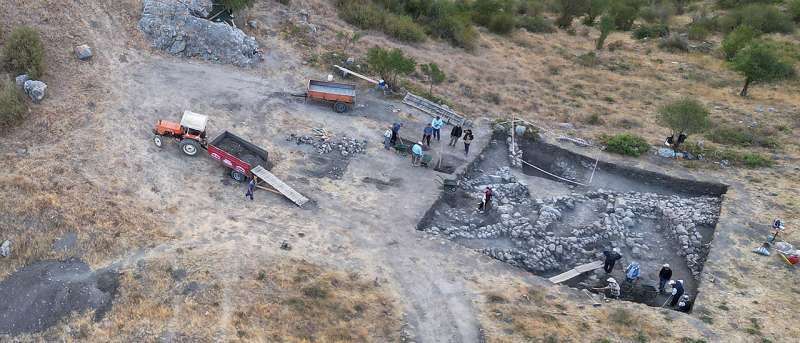This article has been reviewed according to Science X's editorial process and policies. Editors have highlighted the following attributes while ensuring the content's credibility:
fact-checked
trusted source
proofread
New Indo-European language discovered during excavation in Turkey

An excavation in Turkey has brought to light an unknown Indo-European language. Professor Daniel Schwemer, an expert for the ancient Near East, is involved in investigating the discovery.
The new language was discovered in the UNESCO World Heritage Site Boğazköy-Hattusha in north-central Turkey. This was once the capital of the Hittite Empire, one of the great powers of Western Asia during the Late Bronze Age (1650 to 1200 BC).
Excavations in Boğazköy-Hattusha have been going on for more than 100 years under the direction of the German Archaeological Institute. The site has been a UNESCO World Heritage Site since 1986; almost 30,000 clay tablets with cuneiform writing have been found there so far. These tablets, which were included in the UNESCO World Documentary Heritage in 2001, provide rich information about the history, society, economy and religious traditions of the Hittites and their neighbors.
Yearly archaeological campaigns led by current site director Professor Andreas Schachner of the Istanbul Department of the German Archaeological Institute continue to add to the cuneiform finds. Most of the texts are written in Hittite, the oldest attested Indo-European language and the dominant language at the site. Yet the excavations of this year yielded a surprise: Hidden in a cultic ritual text written in Hittite is a recitation in a hitherto unknown language.
Hittites were interested in foreign languages
Professor Schwemer, head of the Chair of Ancient Near Eastern Studies at Julius-Maximilians-Universität (JMU) Würzburg in Germany, is working on the cuneiform finds from the excavation. He reports that the Hittite ritual text refers to the new idiom as the language of the land of Kalašma. This is an area on the north-western edge of the Hittite heartland, probably in the area of present-day Bolu or Gerede.
The discovery of another language in the Boğazköy-Hattusha archives is not entirely unexpected, as Prof. Schwemer explains: "The Hittites were uniquely interested in recording rituals in foreign languages."
Such ritual texts, written by scribes of the Hittite king reflect various Anatolian, Syrian, and Mesopotamian traditions and linguistic milieus. The rituals provide valuable glimpses into the little known linguistic landscapes of Late Bronze Age Anatolia, where not just Hittite was spoken. Thus cuneiform texts from Boğazköy-Hattusha include passages in Luwian and Palaic, two other Anatolian-Indo-European languages closely related to Hittite, as well as Hattic, a non-Indo-European language. Now the language of Kalasma can be added to these.
More precise classification of the new language is in progress
Being written in a newly discovered language the Kalasmaic text is as yet largely incomprehensible. Prof. Schwemer's colleague, Professor Elisabeth Rieken (Marburg University), a specialist in ancient Anatolian languages, has confirmed that the idiom belongs to the family of Anatolian-Indo-European languages.
According to Rieken, despite its geographic proximity to the area where Palaic was spoken, the text seems to share more features with Luwian. How closely the language of Kalasma is related to the other Luwian dialects of Late Bronze Age Anatolia will be the subject of further investigation.
Provided by Julius-Maximilians-Universität Würzburg



















